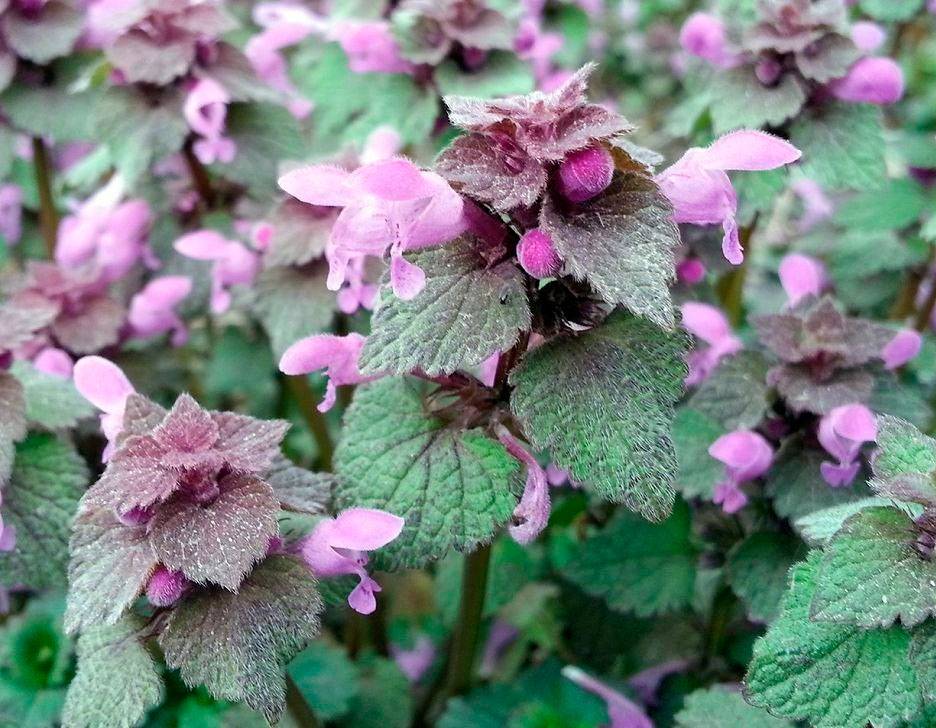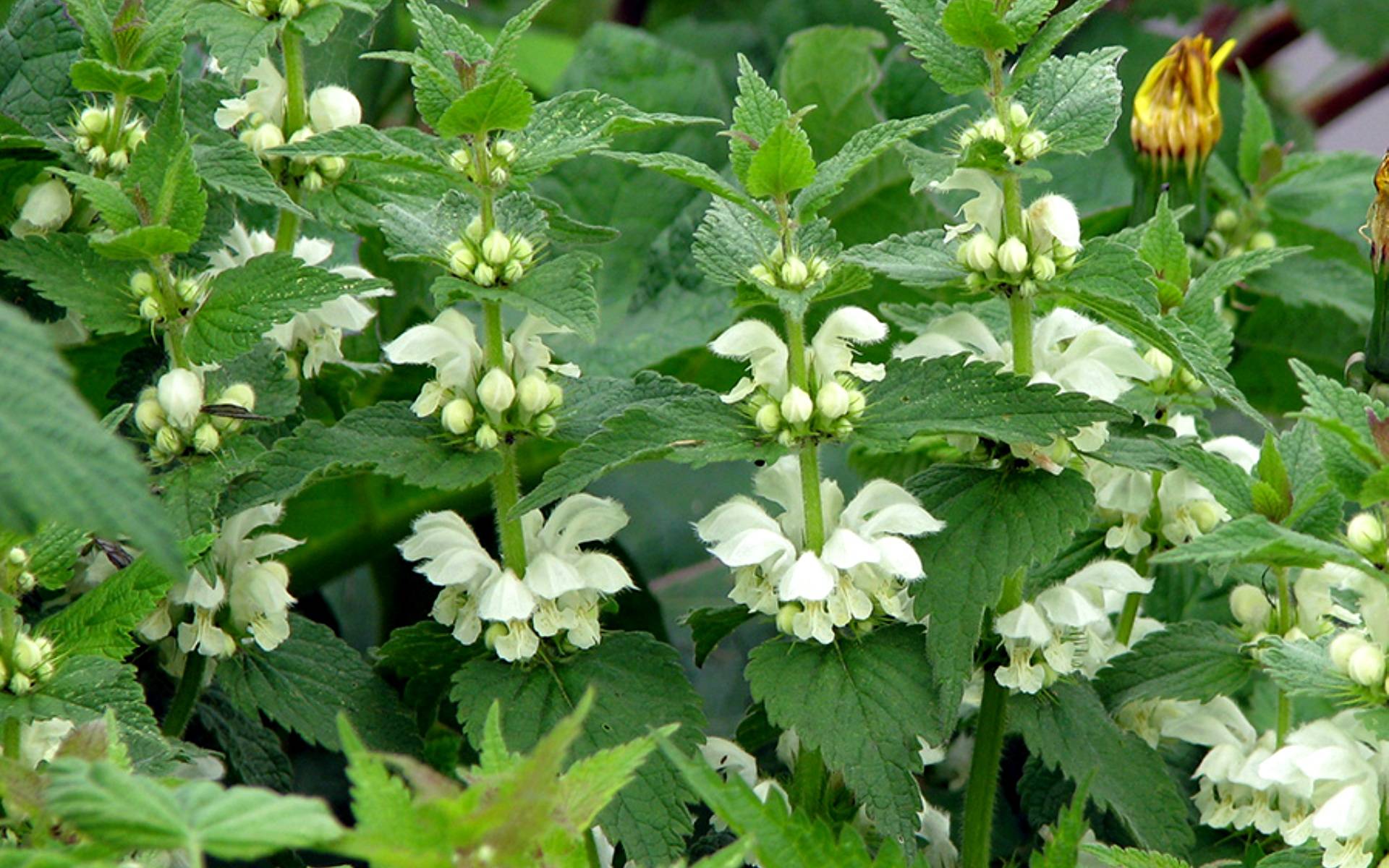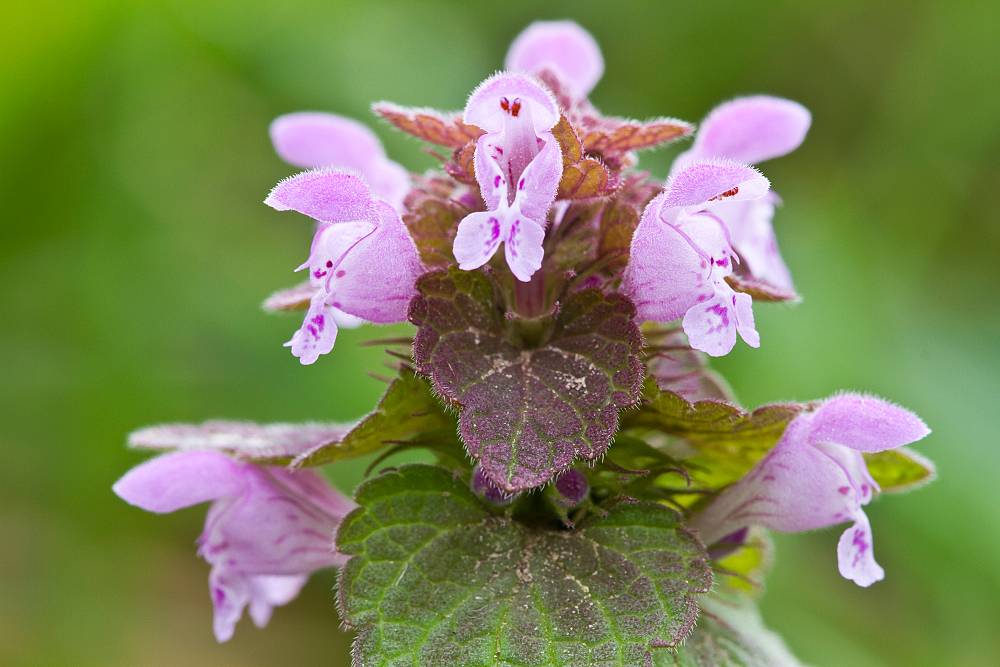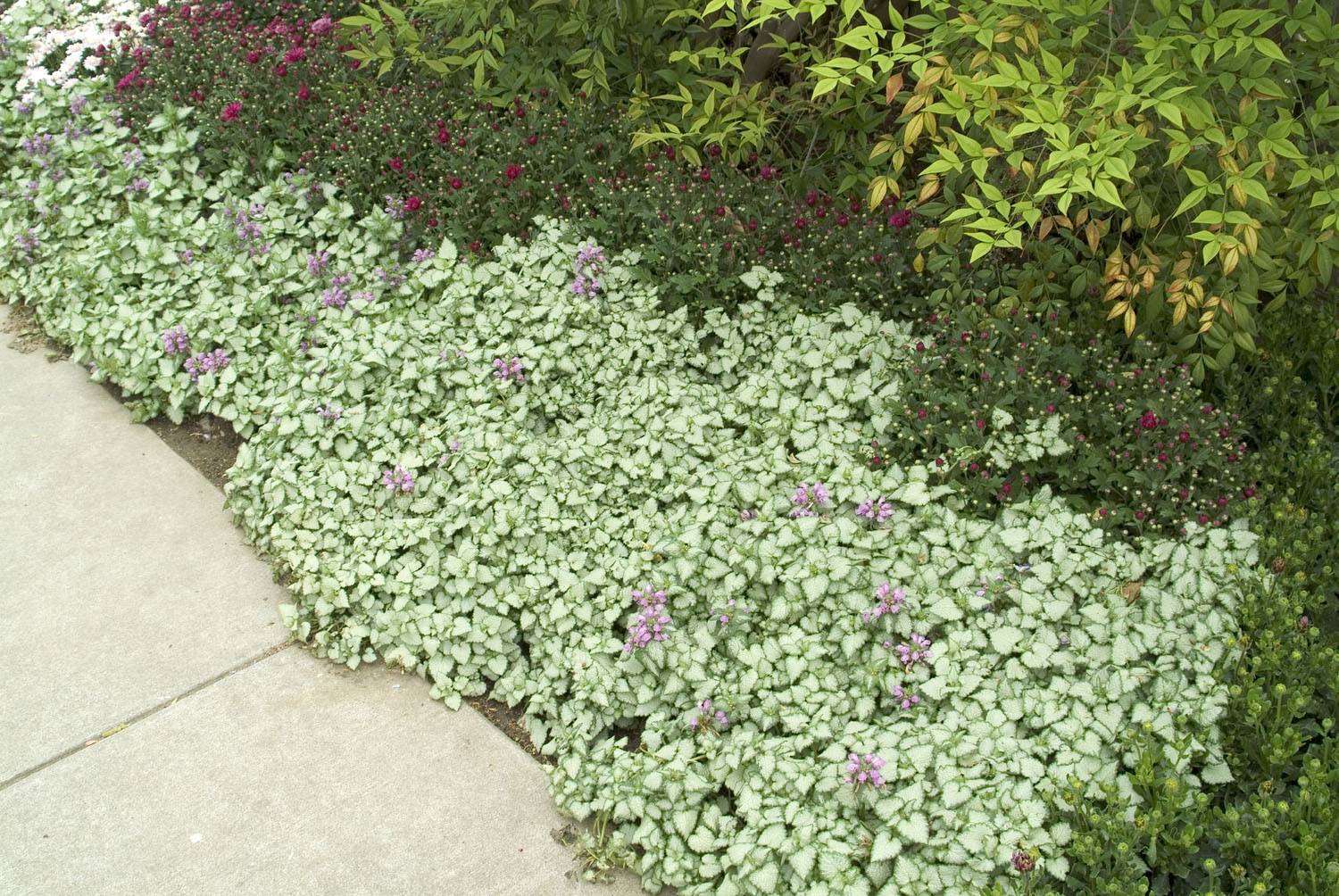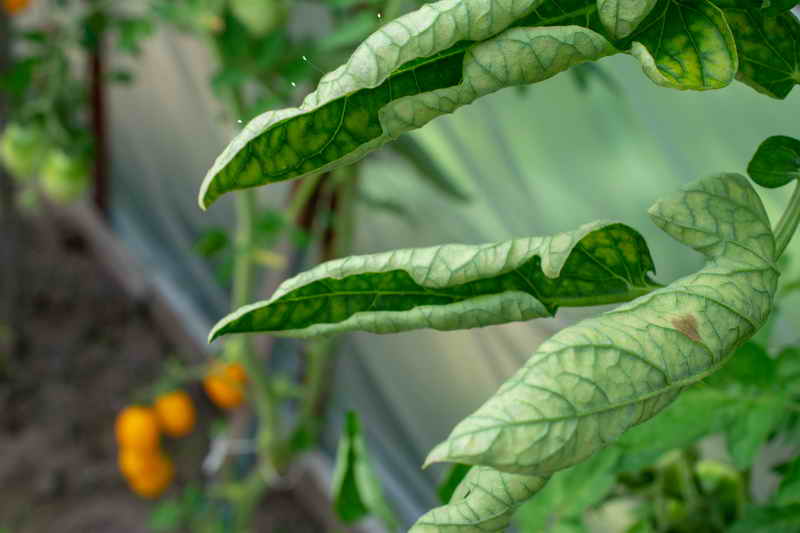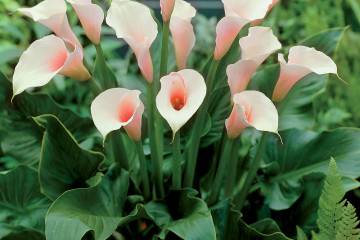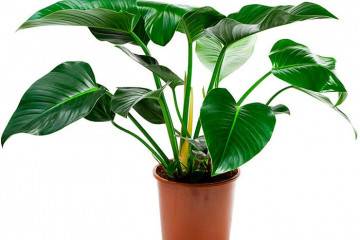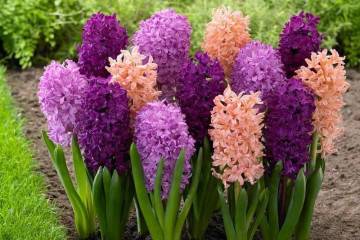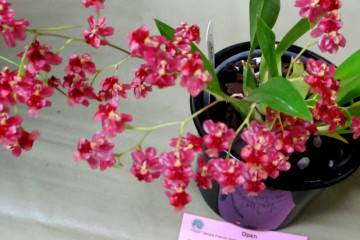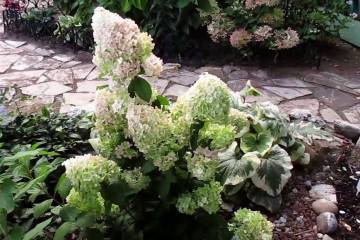Plant lamb - types of flower, planting and care
Content:
The Yasnotka plant is a herbaceous perennial belonging to the Yasnotkovye family. It is popularly called "dull nettles" due to the similarity of the leaves in appearance. But you can touch it calmly - it will not burn. The grass has both decorative and medicinal properties, for which the people fell in love with it, and flower growers began to grow it on their plots.
What does the plant look like, which family it belongs to
The lamb flower (lat.Lamium) belongs to the Lamb family, which forms a whole genus, which includes 40 species. Most of them are common throughout Europe, Russia, Asia and Africa. Some of the varieties are considered weeds, it is very difficult to control them. However, there are ground cover species of lamb that are used as ornamental plants.
Healing properties
Despite the fact that the herb is not included in the State Pharmacopoeia of the Russian Federation, studies of its medicinal properties and contraindications are underway. The plant's preparations are effective as a hemostatic, anti-inflammatory and hypotensive property. This is due to the chemical composition of the plant. It contains tannins that can fight urticaria, eczema, skin inflammation. The mucus that is part of the composition has an expectorant effect, and flavonoids strengthen the walls of the capillaries and reduce pressure.
Briefly about the history of appearance
The homeland of the plant is considered to be Europe, Asia and North Africa. Most of the species are weeds, there are also decorative varieties used in landscape design. The Latin name Lamium was coined by the philosopher Pliny.
The origin of the name, according to its interpretation, is due to several interpretations of the word:
- From Greek Lamios translates as "mouth-throat", or "large cavity".
- Lamia was the name of the queen of Libya, who in history is known as the monster who ate her children. One of the properties of a flower is that it eats pollinating insects that land on it.
Nettle-like leaves do not burn the skin, but all parts of the plant smell very unpleasant. Most likely, this is protection from animals that can encroach on the flower.
Description of varieties - common features and differences
All species are divided into several groups: annuals, biennials and perennials. The most common are the following.
Purple lamb
Other names are pink lamb, purple lamb.
Short description: lives for 1-2 years, leaves are green, flowers are pink, white, purple. In the open field, it reproduces by dividing the bush. It blooms from mid-spring to early autumn.
Spotted lamb (speckled)
The Latin name is Lamium Maculatum. The flowers are pink or light purple.They are quite large 2-3 cm. It blooms from early May to mid-autumn. The leaves are small, dark green.
This species is a perennial with several varieties:
- Bekon Silver - Silver is characterized by purple or ash flowers combined with silvery leaves. Its other name is silvery clearnet.
- Golden Anniversary - Gold Anniversari grows up to 20 cm. Its leaves are bright green with a light stripe in the middle.
- Purple Dragon - Dragon has a pinkish-purple petal color.
- Nancy White - White Nancy is distinguished by silvery leaves and white flowers.
Planting and caring for any of the listed varieties is not difficult.
Yellow lamb
Another name is zelenchukovaya (Yellow, Luteum). Flowers are yellow, whorled. The form of life is a herbaceous perennial. The Pride variety of this species is used for decorative purposes.
Variegated lamb
It is a perennial, yellow petals, yellow spots on green leaves in a chaotic manner.
Felt lamb
A perennial plant with wrinkled, ovoid leaves, with serrations along the edges of the leaves, which makes them even more similar to nettle leaves.
The appearance of plant flowers
The flowers are white, purple or pink. The exception is ash-colored hybrid decorative varieties. They are collected in false whorls, located in the axils of the leaves growing from above. The flowers are labiate, up to 4 cm in size.
Size, shape, color of leaves
Leaves are ovoid or nettle-like. The maximum length is 4 cm. The color is most often green with all its shades, in hybrids there are silvery shades.
Life span
Some species can live only 1 year, others have a lifespan of 1-2 years, and others are perennials, live up to 10 years in one place.
The main methods of breeding in the open field
In the open field, lamb can be propagated by dividing a bush or rhizome, cuttings, layering. For most species, all 3 methods are applicable. But some flowers, for example, Purpurea Claris, reproduce only by dividing the bush.
General rules for outdoor care
Since the spotted variety is most often grown outdoors, planting and caring for it is simple. The rest of the species is even easier to grow, since in nature this plant is as unpretentious as possible.
Watering and humidity
Watering is perhaps the only factor worth paying special attention to. You will have to water the flower often and regularly, only then its decorative properties will manifest themselves as much as possible.
Choosing the right soil
The optimum will be a moist and loose substrate, which contains a sufficient amount of organic and mineral substances. The soil should not be too nutritious, rather closer to poor, otherwise the ground cover will grow very strongly, which will complicate the development of other herbaceous plants.
Illumination of the site, choosing a place for growing
The flower does not need a lot of light, it is quite shade-tolerant. Therefore, it is not necessary to monitor such a factor as illumination. It is advisable to choose a place for planting in which the lamb will be located in the lower tier, in the partial shade of any (preferably deciduous) trees.
Fertilizers and feeding
Fertilizing the soil is often not required. The only time when it is worth applying a mineral complex fertilizer is the budding period.
Problems common to all plants of the genus Yasnotka
Despite its unpretentiousness, the lamb can get sick if it is completely abandoned. Pests that are not detected in time can also cause harm.
Diseases
The most common diseases are:
- Root rot - in case of overflow and stagnation of water in the soil. In this case, watering is reduced, and sand should be added to the soil mixture. The bushes affected by the disease are removed, the rest are treated with a fungicide.
- Drying out of leaves and exposure of stems occurs due to improper watering and lack of moisture. You just need to start watering the plant regularly, and the problem will be resolved by itself.
Pests
Pest insects that most often attack the lamb:
- shield;
- spider mite;
- mealybug.
You can only fight them with insecticides purchased from a gardening store.
Lamb is a plant that is most often found in forests, fields, along the banks of streams and rivers. For most people, this flower is known as a weed, but they do not know about its decorative types and useful properties. Therefore, before neglecting any plant, it is worth learning more about it.
